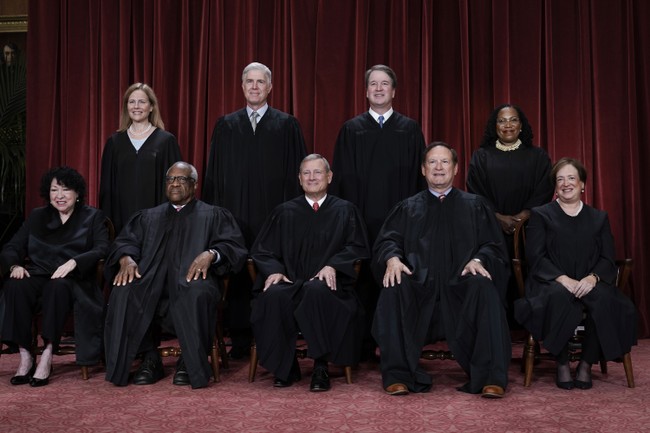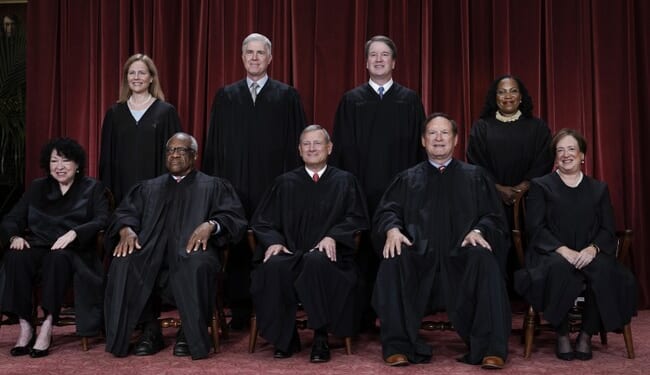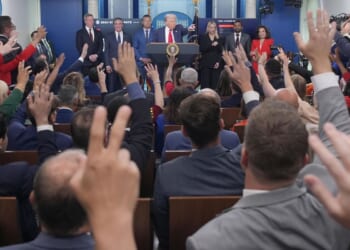
The state of Texas made an emergency appeal to the U.S. Supreme Court, asking for relief from a lower court order that would have forced the state to use congressional district maps from 2021 instead of the new maps that the legislature approved in August. The new maps would probably give the GOP another four or five seats in Congress. They would also offset the move by California to redraw its maps, approved by referendum earlier this month, which would give Democrats another five seats in Congress.
Associate Justice Samuel Alito granted the state a temporary stay to give all nine justices time to review the case. Texas asked the Supreme Court to block the lower court ruling by Dec. 1, and to expedite its review.
Time is a critical factor. Candidates must file their intention to run for office by Dec. 8, with the state’s primary scheduled for March.
“Campaigning had already begun, candidates had already gathered signatures and filed applications to appear on the ballot under the 2025 map, and early voting for the March 3, 2026, primary was only 91 days away,” attorneys for Texas told the court.
Even with the Supreme Court intervening, the case does not look good for Republicans. The appeals court ruling by the Trump-appointed judge, Jeffrey Brown, was based on a letter that Harmeet Dhillon, the Justice Department’s top civil-rights attorney, sent, “urging the state to change the racial compositions of four of those districts,” according to CNN.
The DOJ letter, sent in July, “warned of potential legal action over the state’s [2021] map because of what it called ‘unconstitutional’ coalition districts, or districts with a non-White majority but where no single racial group makes up a majority,” says CNN.
Judge Brown pulled no punches in skewering the letter. “It’s challenging to unpack the DOJ letter because it contains so many factual, legal, and typographical errors,” Brown wrote.
Brown continued: “The gist of the letter, though, is that DOJ is urging Texas to change the racial compositions” of four districts.
Dhillon’s July letter gave the civil rights lobby a hole they could drive a truck through. “She gave them a bomb, and they ran with it,” said Michael Li, a lawyer with the liberal Brennan Center for Justice, of Dhillon’s letter.
Texas Gov. Greg Abbott did no favors for his cause when he sent his own letter adding redistricting to the agenda of the special legislative session he was calling to rewrite the maps. Abbot cited Dhillon’s letter in his reasons for recalling the legislature.
Judge Brown wrote that by doing so, “the governor explicitly directed the legislature to draw a new US House map to resolve DOJ’s concerns.”
The law allows for partisan gerrymandering. But Texas originally based its reasons to redraw its maps on the racial composition of the districts in question. Only later, after their error became obvious, did Texas officials change their tune and try to convince Judge Brown that the reason for the redrawn maps was solely for partisan political advantage.
Texas Attorney General Ken Paxton told Brown that “Texas engaged in partisan redistricting solely to secure more Republican seats in Congress and thereby better represent our state and Texans. For years, Democrats have aggressively gerrymandered their states and only cry foul and hurl baseless ‘racism’ accusations because they are losing.”
The three-judge special appeals panel had one dissenter.
US Circuit Judge Jerry Smith issued a sprawling dissent on Wednesday that repeatedly attacked Brown’s handling of the case. Smith argued that the majority opinion was “replete with legal and factual error, and accompanied by naked procedural abuse.”
“If this were a law school exam, the opinion would deserve an ‘F,’” Smith wrote. “Judge Brown is an unskilled magician. The audience knows what is coming next.”
It’s not likely, given the very short time factor, that the Supreme Court will make a final decision on the district lines. They may punt completely and put off a final decision until the next term, in which case Alito’s stay would remain in place, and the 2026 midterm elections would be conducted using the new maps.
Or the Court may allow the special appeals court’s ruling to stand, and force Republicans to fight for the new maps after the midterm elections. For the GOP, it’s a very slim reed to hang their hopes on.
As a PJ Media VIP, you’ll receive full access to our behind-the-paywall content. CLICK HERE and use the promo code FIGHT, and you’ll receive a 60% discount!












